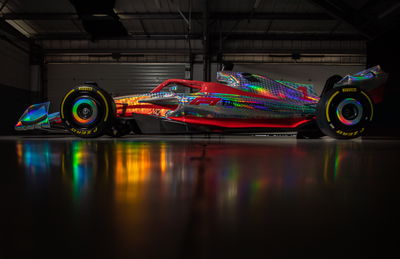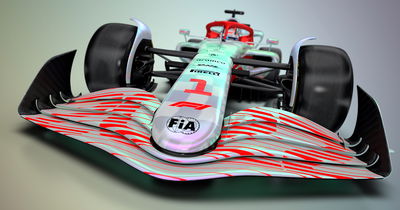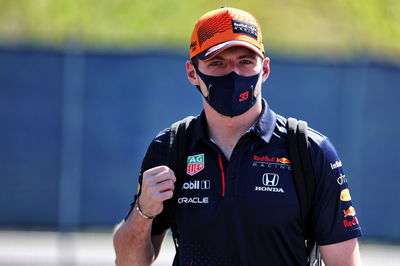FIA doesn’t expect racing to improve “overnight” with 2022 F1 car

Ahead of this weekend's British Grand Prix, F1 revealed its first full-size mock-up of its next-generation car that will be introduced from next season, with the aim of improving the quality of racing and enabling chasing cars to follow more closely.
But speaking at a special launch event at Silverstone, Nikolas Tombazis, the FIA’s head of single-seater technical matters, urged caution over expecting immediate results.
“We expect to see closer racing,” Tombazis explained.
“Maybe not from the first race because maybe somebody will get the new rules right and somebody’s wrong, but very soon we expect to see a closer level of competitiveness between the cars and cars being able to follow each other more closely.”
Tombazis added: “It won't happen overnight. We will obviously study what solutions the teams produce, and we will keep working at it, to improve.
"But we believe over time the racing will improve sizeably.”
F1 technical chief Pat Symonds claimed that the level of detailed simulation work that went into the development of the 2022 car was the equivalent of 471 years’ worth of computing.

“We started the journey in 2017 so we spent longer on this car than I think any other car that has been produced in Formula 1, in terms of getting some regulations together,” Symonds said.
“The aerodynamics generally in a team is developed in three ways – it’s developed using computational fluid dynamics, it’s done using an actual windtunnel, and it’s done using the car itself.
“We didn’t have access to the latter so we’ve really concentrated on our computational fluid dynamics and backed it up with some windtunnel testing.
“But our CFD has been much more sophisticated than is used in the teams, and we’ve been able to do that thanks to our partners at Amazon AWS, who’ve allowed us to run these very sophisticated simulations – around a 70% saving in time to what we were doing initially.
“To give you an idea of how big these things are, our CFD project uses over 1150 computer cores and we have 550 million data points on each model that we run.
“We’ve run 7500 simulations since we started so that’s around 16 and a half million core hours of computing.
“Now to put that into context, if you did that on a pretty sophisticated four-core laptop it’ll take you 471 years to do what we’ve done in developing this car.
“We’ve also produced a huge amount of data, around a petabyte of data. And to put that in context that’s equivalent to 10 million four-drawer filing cabinets full of paper all written on or around a third of the 10 billion images that are on Facebook at the moment.”












